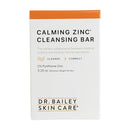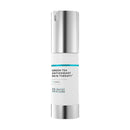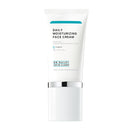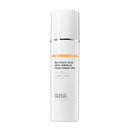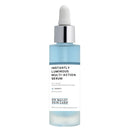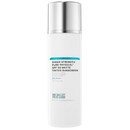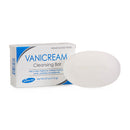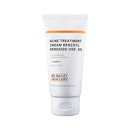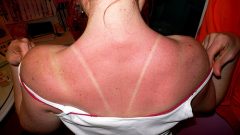Key Elements That Should Be in Your Sunscreen

Protect Yourself from The Sun’s Harmful Rays
Memorial Day is two weeks away. Did you know that “Don’t Fry Day” is the Friday before? Yep, this day was designated by the National Council on Skin Cancer Prevention because Memorial Day is often the first day of the warm weather season where people get a horrific sunburn – a burn that causes permanent skin damage that remains for your entire lifetime.
Key Elements That Should Be in Your Sunscreen
- Protect Yourself from The Sun’s Harmful Rays
- As a practicing dermatologist, here are the key elements that should be in your sunscreen for sun protection you can trust
- But, how much sunscreen do you need to apply to your face during the average day when you are not wearing a swimming suit?
- What sunscreen ingredients provide the best broad spectrum protection?
- Benefits of Mineral Zinc Oxide Sunscreen UV Filter
- The bottom line on which sunscreen filters I prefer
- We know that wearing the best sunscreen daily is important for healthy and attractive skin
Did you know that getting 5 or more sunburns can double your risk of getting melanoma, the deadliest form of skin cancer?
Yep, tragic job-security for dermatologists. Don’t let that be you or the people you love. Get your sun protection “gear” in order now, including the right sunscreen.I’m a clinical dermatologist who has practiced for over 30 years in sunny California. I’ve seen who gets skin cancer, what sun-protection practices work – and which have let my patients down. I’ve learned how to guide my diverse group of patients to practice good sun protection in a way that fits their lifestyle, values and budget.
No matter how extreme their sun exposure is, how sensitive their skin is to UV, and/or how intolerant they are to certain products, I've guided my patients to enjoy sunny summer weather without getting a tan or a burn. My patients have proven it is possible. My recommendations here are based on what patients have taught me over the course of my career as I have examined their skin. Dermatologist Dr. Cynthia Bailey
It is important to get started with your sun protection strategy now. Don’t wait until the last minute. You need your plan ready and proven before the summer sun gets intense and your outdoor play plans are in full swing.
As a practicing dermatologist, here are the key elements that should be in your sunscreen for sun protection you can trust:
#1: Use Only the Best Sunscreen.
Your sunscreen must provide an SPF 30, at minimum, and be labeled “Broad Spectrum.”
You will read that SPF 15 is enough. I disagree and I recommend 30 or higher. You will see why later.
Did you know that not all sunscreens are good at blocking all the harmful rays?

This is especially true for the UV ray called UVA. In the past, sunscreens provided almost no UVA protection, making this a source of controversy and confusion. Here is the story:
UVB is the intense summer mid-day ray that quickly burns your skin. SPF originally was a measure of how well UVB was blocked. You could stay outside in the sun longer without burning – and get lots and lots more UVA than you would have otherwise. You thought you were safe because you did not burn.
Little did people know that the UVA was loading their skin with lots of delayed damage that shows up later in life.
Bottom line, you MUST see “Broad Spectrum” listed on your sunscreen front label.
#2: You Must Put on Enough Sunscreen to Get Enough Protection.
Studies have shown for years that people almost never do. There are a lot of reasons why. Start with an SPF 30, and you have extra protection. But it probably becomes more like an SPF 15 if you are not applying and reapplying “as directed.” Just be careful, and pay attention to how much you apply. And be careful to reapply product on all your exposed skin – and start with SPF 30!
Here is the story:
SPFs are tested and rated at about 1 oz. (a shot glass), the amount covering the average-adult human body. That’s 2 mg./cm2 of surface; that number is probably of no use to you practically. The point is, the average adult is around 1.8 (woman) to 2 meters squared of skin surface and 1 shot glass is what you need to get the right sunscreen 'dose' (coverage) if you are in a swimming suit.
But, how much sunscreen do you need to apply to your face during the average day when you are not wearing a swimming suit?

This is a common, and really important question. Based on “the Wallace Rule of nines for body surface area,” your head is 9% of that; the “anterior head” (head and neck) is 4.5%. Every person’s anatomy varies, but this is approximately the percentage of area of your face and neck, minus your hair on that front half of your “head.”
I have guesstimated this over the years at about 4% of your total body surface area. Thus, for the purposes of applying daily sunscreen in the morning on the exposed skin of the front of your head and neck, meaning your face and front and sides of your neck, you need 4% of a shot glass.
Doing the math, 4% of your 1 oz. required-application-dose, based on 1 oz. being 6 tsp., this comes to ¼ tsp. per face/neck/ears depending on how much of your “head and neck” your hair covers.
Basically, I use less than a tsp. for my face/neck/ears/behind my ears and the back of my neck above my collar line, and it works. This is what I have taught my patients over the years, and it usually works for them, too.
How do you know if you are wearing enough sunscreen?
The good news is that you can test your results.
Are you getting a tan or are your freckles and age spots getting darker? If so, you need to use more of your sunscreen product.
Again, every product has a different consistency so you may need to gauge up or down based on tanning or darkening of freckles. Just test this before you plan intensive UV-exposure – you need to know that your strategy is spot on!
#3: Wear Sunscreen Every Day on Exposed Skin.

UV-rays are sneaky, and unless you live in a deep dark cave, you need sunscreen every day. UVA comes through window glass, and both UV rays bounce off reflective surfaces like cement, rocks and buildings. UV damage accumulates. The body can fix some of the damage, but not all.
Even UV exposure below the level to cause a burn will accumulate damage. The damage leads to wrinkles, skin thinning, sun spot freckling, and skin cancer.
What sunscreen ingredients provide the best broad spectrum protection?
You will see some confusing and conflicting info on the web right now about sunscreens. I’ve read a lot of it, and even I’m confused – in vitro versus in vivo versus ex vivo testing, physical sunscreens tested in differing sizes, reflection versus absorption versus scatter mechanisms, absorption through the entire UVA-spectrum, photo stability or filter combos – it goes on and on.
Basically, you need a really good chemist to make a sunscreen product that is tested on humans, and then, put it to the test in real life. I am NOT a skin care chemist. I have been in the privileged position to do full skin-exams for 30+ years and observe how my patients have put sunscreen to the test. Dermatologist Dr. Cynthia Bailey
I can tell you what has taken good care of my patient’s skin based on these years of observation. I’m also really fair-skinned and spend as much time outdoors in intense sun exposure settings as I possibly can.
#4: Know What UV Filters (UV protecting ingredients) are in Your Sunscreen
Here is my opinion, based on what I've learned doing skin exams for 30+ years, regarding sunscreen types:
Benefits of Mineral Zinc Oxide Sunscreen UV Filter
This mineral sunscreen ingredient is my top choice in sunscreens. It is what I wear daily and have for years. It is also what most of my patients choose and what I observe to work the best when I examine their skin. Mineral zinc oxide protects skin from UV penetration with mineral particles. The smaller they are, the more invisible they can be on skin. Function and invisibility also are determined by coating the particle and the geometry of the coated particle (sphere, oblong shape etc.) Zinc oxide technology has evolved massively and micro-fine size (non-nano) is now invisible and my top choice.
Zinc oxide mineral sunscreens block UVB and UVA. Zinc oxide's UV protection drops off at the end of the UVA spectrum so I like to see a lot of zinc oxide in a product. Dr. Bailey
I’ve recommended 5% or more for years and I like to see even more, if possible.

My Sheer Strength Pure Mineral SPF Sunscreens are made with the best and latest in invisible micro-fine zinc oxide technology. They are NOT cheap and this technology is NOT cheap. They are the best - and that matters because sun damage can't be taken back.
My Sheer Strength Pure Physical Matte Tinted SPF 50+ Sunscreen and Sheer Strength Pure Physical Spray SPF 50+ Sunscreen products contain 16.2 and 12% respectively. That is state-of-the-art for protection that is invisible. I wear these daily with the Matte Tinted on my face and the Spray on neck, chest, ears, hands and all other exposed skin. It is fabric friendly, which is important to me. I touch up my sunscreen with my Sheer Strength Pure Physical SPF 30 Refresh Powder.
It is also important to know another benefit of zinc oxide is that it is uniquely photostable, meaning it does not break down as it protects your skin. This is a stark comparison to all of the 'chemical' sunscreen UV ingredients. Zinc oxide and titanium dioxide are also not absorbed in the skin. The chemical sunscreens are.
Even with mineral zinc oxide and titanium dioxide sunscreens, you still need reapplication in intense UV-exposure settings because product will rub off and migrate into skin creases in the course of normal activities. - Dr. Bailey
There are some non-mineral filters that are reasonably good UV-filters
Some of these are available in the U.S. and some are not. Chemical sunscreen ingredients are also called "organic". All active ingredients that block UV rays are really called "filters".
Please note that I am not a huge fan of new “organic” filters. I like to watch them work – or not – or cause rashes – or not on “other people” before I recommend them. I also like the toxicity issue to get a good think and test in real life settings. - Dr. Bailey
The two new chemical/organic sunscreen filters that appear to block UV rays well are:
Mexoryl (Ecamsule): SX (water-soluble) and XL (oil-soluble)
Both are patented by L'Oréal and exclusive to their brands. These absorb UV, the molecule “gets excited” and releases thermal energy (heat) on the outside of the skin. Ecamsule misses some of the UVB spectrum so it must be combined with other sunscreens (UV filters) that cover that.
Mexoryl is a good UVA-blocker and not as fragile as earlier chemical UV filters such as avobenzone. Its presence is said to be tricky in an overall product formulation because it is an acid. Common UV filters seen with it include avobenzone, octocrylene, titanium dioxide, and others. The U.S. and Canada allow the SX form.
Canada allows the XL form, and the FDA is evaluating its safety. A few of my patients have used Mexoryl products, and my clinical observation is that they work in that I don’t see sun burning, tanning or darkening of sun freckles.
Tinosorb S and M
These are also large molecules that may not enter skin. They are patented by BASF and have broad UV-protection. They don’t break down with UV-exposure and can help other UV-filters stay more stable such as avobenzone (Tinosorb S) and octinoxate (Tinosorb M).
Tinosorb M also reflects and scatters UV and is sort of like a particle sunscreen, though it is not a mineral UV-filter. Apparently, it does not show estrogenic effects in vitro (test tubes). It is not approved by the FDA yet, but it is available in Europe.
These two Tinosorb chemical UV filters/sunscreens are relatively new but they have some positive attributes. They are large molecules and so probably do not penetrate into the skin. This is important as some sunscreens are absorbed into the body and can cause troubles, like hormone disruption.
They can also sting or cause skin allergies. Mexoryl and Tinosorb block UVA very well, and I am optimistic. They are relatively new, however, and so post marketing adverse experiences are still a “wait and watch” in my opinion.
The bottom line on which sunscreen filters I prefer:

Zinc oxide, hands down.
- I’ve had thousands of patients use it for many years. It has stood the test of time for sun protecting my patient’s skin.
- It’s safe. Zinc oxide is also an ingredient used in skin care for many other applications for a really long time – remember diaper rash and zinc oxide?! It has an excellent safety record.
- It is non-irritating for even the most sensitive skin.
- It can be formulated to be invisible yet still block UV well. Yep, no more pale white tinting, or white clown makeup look on your skin. Look for micro-fine zinc when having invisible protection is important for you. You can also get good protection from nano-size zinc, but my preference is micro-fine zinc oxide. The non-nano products will not be invisible. They still offer amazing protection. Many natural formulations use larger particles.
- It has the best reef safety profile. Wearing sun protection swim shirts and applying a non-nano formula zinc oxide sunscreen to the small surface area of exposed skin is smart reef stewardship, in my opinion.
The bottom line about sunscreen from the dermatologist:
-
Sun avoidance, not sunscreen is recommended for infants 6 months of age or less.

- Apply sunscreen before you go out so it can dry and bind better to your skin. This will help it perform better for you.
- Reapply it if you have rubbed it off your skin like by changing your clothing or in frisky activities like sports.
- Reapply it after water contact like swimming or sweating no matter how long it’s been on.
- Reapply it if you are in intense and extended UV exposure.
- Don’t spray sunscreen on your face. Frankly, don’t spray it without rubbing it in on other areas too. Sprays leave droplets, and by definition, you can expect skin areas between droplets or they would not be droplets!
- Don’t forget your lip protection. I don’t recommend chemical sunscreens on the lips nor do I recommend nano-zinc on the lips.
- Don’t rely on sunscreen alone. Wear sun-protective clothing and seek the shade. Sunscreen is designed to protect exposed skin – let that be as small of an area as possible because you have great sun-protective clothing to wear during intense UV-exposure.
We know that wearing the best sunscreen daily is important for healthy and attractive skin. To learn more about my Sheer Strength Pure Physical Sunscreens click here.
Author: Dr. Cynthia Bailey M.D. is a Board Certified dermatologist practicing dermatology since 1987. She has done well over 200,000 skin exams during her career and authors the longest running physician written skin health blog in the world.
References:
Antony R. Young, PhD, Ultraviolet radiation and the skin: Photobiology and sunscreen photoprotection, Journal of the American Academy of Dermatology, March 2017 Volume 76, Issue 3, Supplement 1, Pages S100–S109
Steven Q. Wang, Haoming Xu, Joseph W. Stanfield, Uli Osterwalder, Bernd Herzog, Comparison of ultraviolet A light protection standards in the United States and European Union through in vitro measurements of commercially available sunscreens, Journal of the American Academy of Dermatology. 2017; Vol. 77, Issue 1: 42-47
Mark A. Mitchnick, MD, David Fairhurst, PhD, Sheldon R. Pinnell, MD, Microfine zinc oxide (Z-Cote) as a photostable UVA/UVB sunblock agent, Presented in part as a poster at the 55th Annual Meeting of the American Academy of Dermatology, San Francisco, Calif, March 21-26, 1997. (J Am Acad Dermatol 1999;40:85-90.)
More Balaji D. Physical sunscreens: On the comeback trail, Indian Journal of Dermatology, Venereology and Leprology, Vol. 73, No. 2, March-April, 2007, pp. 80-85
Threes G Smijs, Titanium dioxide and zinc oxide nanoparticles in sunscreens: focus on their safety and effectiveness, Nanotechnol Sci Appl. 2011; 4: 95–112.
Stiefel C, Schwack W, Photoprotection in changing times – UV filter efficacy and safety, sensitization processes and regulatory aspects, International Journal of Cosmetic Science Volume 37, Issue 1, Review Article, First published: 25 September 2014 https://onlinelibrary.wiley.com/doi/full/10.1111/ics.12165
Julián Jiménez Reinosaa, et. al., Enhancement of UV absorption behavior in ZnO–TiO2 composites, Boletin De La Sociedad Espanola De Ceramica Y Vidrio, 55 (2016); 55-62
Curtis Cole, et. al., Metal Oxide Sunscreens Protect Skin by Absorption, Not by Reflection or Scattering, Photodermatology Photoimmunology and Photomedicine 32(1) October 2015


